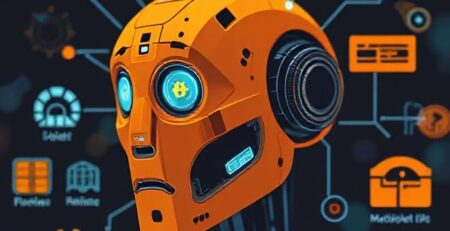The 3D Printing Revolution: Benefits And A Glimpse Into The Future
Imagine a world where you can design and create physical objects with just a computer and a specialized printer. This is not science fiction; it is the world of 3D printing. 3D printing has rapidly evolved from a niche technology to a game-changer in various industries. In this blog post, we will explore what 3D printing is, its numerous benefits, and its exciting future possibilities.
What is 3D printing?
3D printing, also known as additive manufacturing, is the process of creating three-dimensional objects from a digital file. It works by adding material layer by layer to build the object, with each layer representing a cross-section of the final product. This approach is in contrast to subtractive manufacturing, which involves removing material from a block to shape an object. 3D printing allows for the production of intricate shapes while using less material compared to traditional manufacturing methods. This technology has found applications in a wide range of fields, from aerospace and healthcare to fashion and art.
Benefits of 3D Printing
1. Customization – 3D printing allows for mass customization. Each item can be uniquely tailored to the individual’s needs or preferences, offering a level of personalization that was previously impossible.
2. Cost-Efficiency – While the initial investment in a 3D printer can be significant, it can save money in the long run by reducing material waste and labor costs, especially in prototyping and small-batch production.
3. Reduced Material Waste – 3D printing is additive, meaning it only uses the material needed for the object, minimizing waste. 3D printing’s ability to reduce waste and create more sustainable materials has made it an environmentally friendly option for some applications.
4. Complex Geometrics – 3D printing can produce objects with intricate and complex geometries that would be difficult or impossible to achieve using traditional methods. Industrial 3D printing liberates design from manufacturing constraints, allowing any 3D CAD shape to be realized efficiently. Material is used only where necessary, offering design freedom and reduced material consumption, a boon for various industries.
5. On-demand printing and production – Manufacturers face pressure to meet diverse market demands, particularly for customization in industries like automotive, consumer goods, and medical. Additive manufacturing by EOS offers on-demand production, enabling highly individualized products within each batch, making customization more feasible and cost-effective.
As 3D printing continues to advance, its future possibilities are nothing short of transformative:
1. Larger-scale manufacturing – While 3D printing is currently used for smaller items, there is ongoing research into scaling up the technology to create larger structures, such as buildings and infrastructure components.
2. Sustainable production –When integrated into on-demand, decentralized digital warehouses, 3D printing reduces inventory and waste. Locating production closer to supply chain destinations also cuts carbon emissions. The growth of sustainable 3D printing materials, including recycled, reusable, and biodegradable plastics, further supports sustainability efforts.
3. Supply Chain Resilience – Additive manufacturing enables shorter, stronger, and more resilient supply chains by placing production closer to consumers. On-demand 3D printing transforms physical inventory into digital, allowing for the direct printing of components near the supply chain destination, reducing the need for storage and transportation.
3D printing is a transformative technology with the potential to change the way we design, manufacture, and consume products. As this technology continues to evolve, it will undoubtedly shape our world in ways we can only begin to imagine.












